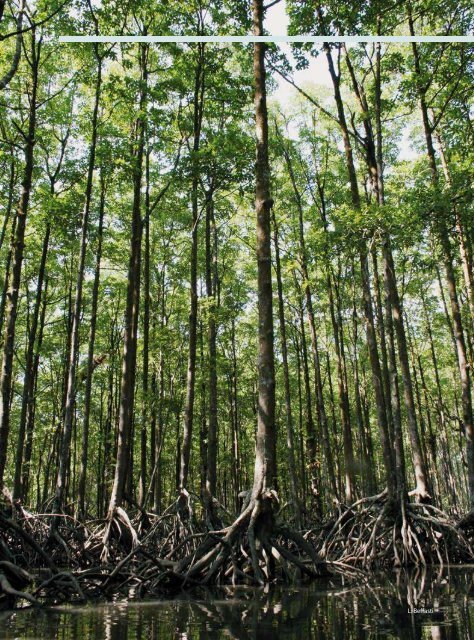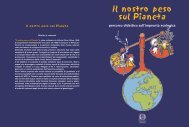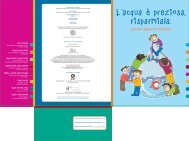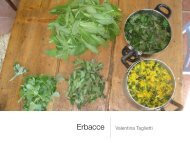Myanmar Protected Areas: Context, Current Status ... - Istituto Oikos
Myanmar Protected Areas: Context, Current Status ... - Istituto Oikos
Myanmar Protected Areas: Context, Current Status ... - Istituto Oikos
You also want an ePaper? Increase the reach of your titles
YUMPU automatically turns print PDFs into web optimized ePapers that Google loves.
L. Beffasti<br />
100 101<br />
3<br />
3.1<br />
3.2<br />
In-depth Study of Lampi Island Marine National Park<br />
A. Bonetti<br />
Purpose<br />
The objective of this in-depth study was to verify existing information and to collect new – mainly<br />
qualitative – data to fill in some of the gaps in the existing information on the protected area, with<br />
the available resources and under the strong limitations of accessibility (permits and climate). Prior to<br />
the current surveys, information on the occurrence and status of critical biodiversity in Lampi Island<br />
Marine National Park (MNP) were collected from reputable sources: FAO 1983b; FD-UNDP-FAO 1986;<br />
Rabinowitz 1995; Fischer 1996 & 1997. Up-to-date, reliable and more comprehensive information are<br />
needed to guide future planning and management strategies. To fulfil this objectives, surveys were<br />
undertaken of marine and terrestrial flora and fauna, specifically on plant, mammal, bird, reptile,<br />
amphibian, fish, crab, mollusc, sea-cucumber, seaweed and plankton species. Interviews to local<br />
villagers to asses socio-economic conditions were also conducted. Time and resource constraints<br />
allowed the organization of a limited number of surveys of the flora and fauna of Lampi Island MNP.<br />
The focus of the surveys was selected based on the analysis of the main gaps concerning biodiversity<br />
information and on the consensus agreed between stakeholders, in particular <strong>Istituto</strong> <strong>Oikos</strong>, BANCA<br />
and FD. Priority was given to qualitative surveys in order to produce information on the type of<br />
biodiversity resources present in the protected area. Surveys took place in the period 2006 – 2010<br />
in the framework of the MABR (2006-2009) and MEP (2009-2010) projects. A detailed list of surveys<br />
is given under paragraph 7 - Research (current chapter). The description of the Lampi Island MNP<br />
contained in this chapter therefore present the preliminary findings of the surveys carried out under the<br />
MABR and MEP projects, being fully aware that further investigation is required and desired to bring more<br />
significant results, fill the remaining information gaps and continue to update the data.<br />
Results<br />
Geography<br />
The Myeik Archipelago, located in the Tanintharyi Region, the most southern Region of <strong>Myanmar</strong>, comprises<br />
800 islands distributed along 600 km of coastline in the Andaman sea. The Archipelago was formed by a<br />
combination of tectonic movement and volcanic activity. The islands, ranging in size from very small to<br />
hundreds of square kilometers, are covered by tropical lowland wet evergreen forests with a high biodiversity<br />
and surrounded by an extensive coral reef system. Lampi Island Marine National Park is one of the four<br />
marine protected areas in <strong>Myanmar</strong> and the only protected site in the Myeik Archipelago. It protects a variety<br />
of different habitats (evergreen forest, mangrove forest, beach and dune forest, coral reefs, sea grass) and a<br />
rich biodiversity. 195 plant species of the evergreen forest and 63 species typical of the mangrove forest, 19<br />
mammal, 228 bird, 19 reptile, 10 amphibian, 42 fish, 42 crab, 50 gastropod, 41 bivalves, 35 sea-cucumber<br />
(holothurians), 73 seaweed, 11 seagrass and 333 plankton species have been identified so far and more<br />
are likely to be added with further surveys (see paragraph 3.4 checklist). The protected area provides food,<br />
water and energy sources to the local population (3,000 people in 5 settlements). Spiritual and cultural<br />
values are attributed to the site by Moken sea gypsies who consider Lampi as a “Mother island”. Socioeconomic<br />
and demographic pressures are the main threats to the natural and cultural values of the park.






